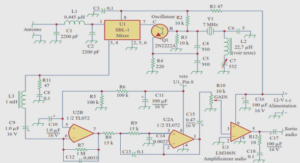Measuring Hg Isotopes in Bio-Geo-Environmental
Reference Materials
With the emergence of new analytical techniques and the expansion of scientific fields explored by using mercury isotopes, the community needs reference materials (RM) to validate and assure the accuracy of the results. The present work investigates (1) the characterisation of secondary RM in order to validate analytical systems, (2) the effects of two complex matrices on isotopic determination using stannous chloride cold vapour generation coupled to MC-ICP-MS (CV-MC-ICP-MS), (3) the effects of multiple digestion techniques for total Hg extraction and (4) the characterisation of nine geo-bio-environmental RM. Two secondary monoelemental RMs analysed using two different analytical setups yielded isotopic compositions on δ202Hg of -3.54 ± 0.27‰ . These two RMs cover the whole range of Hg isotopic fractionation in natural samples and are made available to the scientific community. Complex fly ash and hydroxysulfate green rust matrices were synthesised, spiked with NIST SRM 3133, then digested and finally analysed versus the monoelemental NIST SRM 3133 to show potential effect of these complex matrices during CV-MC-ICP-MS. Three digestions techniques, including traditional acid digestion, microwave digestion and high pressure-high temperature digestion, were applied to the lichen RM BCR-482 in order to compare advantages and drawbacks of these methods. Finally, the isotopic compositions of nine RMs including soils (NIST SRM 2711; GXR-2; GSS-4), sediment (GSD-10), jasperoid (GXR-1), ore deposit (GXR-3), fly ashes (BCR-176; BCR-176R) and lichen (BCR-482) are reported. These selected materials Devant l’émergence des nouvelles techniques analytiques et l’expansion des champs scientifiques explorés par l’utilisation des isotopes du mercure, la communauté scientifique a besoin de matériaux de références pour valider et assurer la justesse des résultats de mesures. Ce travail investigue (1) la caractérisation de matériaux de référence secondaires afin de valider les différents systèmes analytiques, (2) l’effet de deux matrices complexes sur la mesure des compositions isotopiques en utilisant la génération de vapeur froide (chlorure stanneux) couplé à l’ICP-MS multicollecteur (CV-MC-ICP-MS), (3) l’effet de plusieurs techniques de digestion pour l’extraction du Hg total, (4) la caractérisation de neuf matériaux de référence d’origine géologique, biologique ou environnementale. Les deux matériaux de référence secondaires mono élémentaires ont été analysés avec plusieurs systèmes analytiques et ont montré des compositions isotopiques sur δ202Hg de -3.54 ± 0.27‰ (CRPG-F65A, 2SD, n = 38) et +2.59 ± 0.19‰ (CRPG-RL24H, 2SD, n = 30) par rapport au matériau de référence certifié NIST SRM .
Have δ202Hg values ranging from -1.75‰ to +0.11‰. Some RMs also presented mass-independent fractionation with Δ199Hg and Δ201Hg of up to -0.6‰
Mercury comprises seven isotopes from mass 196 to 204. Its exact atomic weight, estimated from the relative abundance of its isotopes, was precisely evaluated by Alfred Nier almost 60 years ago (Nier 1950). In the last 10 years, other analysts have reported the relative isotope abundance of “terrestrial mercury” in various samples, such as cinnabar from the Almaden mines or Hg from NIST reference materials (SRM 1641d and SRM 3133) (Lauretta et al. 2001, Hintelmann and Lu 2003, Xie et al. 2005, Smith et al. 2005, 2008, Foucher and Hintelmann 2006, Blum and Bergquist 2007). Although MC-ICP-MS measurements of Hg isotopic composition may be precise to fractions of ‰, the determination of an absolute ratio is a difficult task. Indeed, whereas individual measurement of 202Hg/198Hg ratios have low reported uncertainties, variations of a few ‰ on that ratio for a given sample may be calculated when comparing proposed values from one group to another (Hintelmann and Lu 2003, Xie et al. 2005, Foucher and Hintelmann 2006, Ridley and Stetson 2006, Blum and Bergquist 2007, Yang and Sturgeon 2009). This highlights the fact that the best way to express Hg isotopic compositions is to use delta values relative to a common RM, for example, NIST SRM 3133 as proposed by Blum and Bergquist (2007). Up to now, most Hg isotope determinations were conducted using stannous chloride (SnCl2) cold vapour generation coupled to MC-ICP-MS, allowing the characterisation of the total Hg isotopic composition. This method is based on the quantitative transformation of Hg(II) in solution into a mono-elemental Hg0 vapour directly introduced into the MC-ICP-MS after being mixed with a Tl isotopic reference solution for the purpose of mass bias correction (e.g., Blum and Bergquist 2007). As only Hg vapour is introduced into the MCICP-MS, the method allows measurements on a matrixfree sample and, therefore, prevents instrumental matrix element interferences and benefits from a high sensitivity compared with solution nebulisation. However, some authors (e.g., Malinovsky et al. 2008) have pointed out that the kinetics of Hg(II) reduction by SnCl2 may vary significantly with complex sample matrices, leading to incomplete reduction in the introduction system and possible isotope fractionation (Zheng et al. 2007). In parallel, new approaches for Hg isolation from the matrix are emerging in order to determine the isotopic composition of the various Hg phases or chemical forms of a given sample. Sonke et al. (2008) developed a Hg0 vapour preconcentration technique by amalgam onto a gold trap and desorption into a syringe that was then directly coupled to the MC-ICPMS for isotope determination of atmospheric gaseous elemental Hg (Zambardi et al. 2009). Malinovsky et al. (2008) used anion exchange chromatography and a solution nebulisation introduction system for the separation of total Hg. Epov et al. (2008) developed an online gas chromatography (GC) separation coupled to a MC-ICP-MS to determine simultaneously the Hg(II) and MeHg isotopic composition. Finally, Dzurko et al. (2009) also developed a GC separation method coupled to a MC-ICP-MS to investigate mercury methylation. A combustion method was developed to liberate Hg from large quantities of solid samples for subsequent CV-MC-ICP-MS analysis and applied to mineral, rock, coal and sediment matrices (Smith et al. 2005, 2008, Biswas et al. 2008, Sherman et al. 2009, Gehrke et al. 2009). The emergence of these new analytical techniques for measuring Hg isotopic compositions justifies the need for a multitude of reference materials of biological, geological, environmental and atmospheric origin, characterised for their Hg isotope composition.






